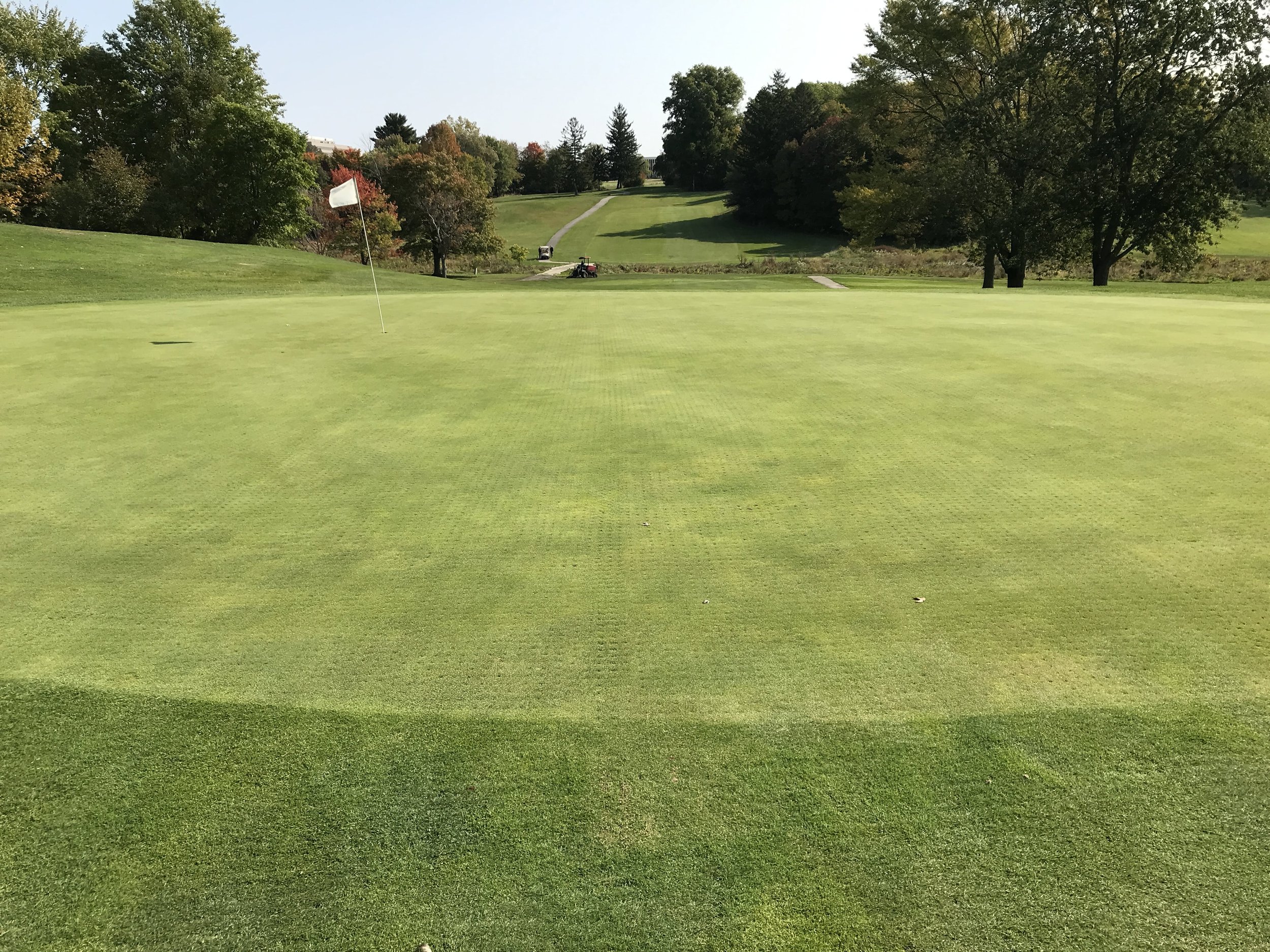When you arrive at a golf course, you’ll typically be greeted by an average of 18 holes. But if you arrive at a golf course that is actively undergoing aeration, you’ll probably see something similar to green swiss cheese.
Putting on greens that have just been aerated can be very frustrating, but most golfers know greens must be aerated for optimal playing conditions. It may not be the most appealing playing surface, but the long-term benefits greatly outweigh the temporary inconvenience.

What is Aeration?
Golf course aeration involves using special machinery built to punch through the turf and deep into the soil. This machinery then removes the section of soil and turf, known as a ‘plug’. This will create a channel for air and water and will enable new growth to occur.
These aeration holes are then filled with a special blend of sand or sediment known as Topdressing. Topdressing sand helps to move water and air through the soil as needed, dissolve old plant materials, and even help the greens recover more quicker.
The goal is to reduce the thatch and rejuvenate the course. Aeration is the key to relieving soil compaction, stimulating root growth, and improving drainage. Old plant materials are removed in the process making way for new and healthy root systems. If organic deposits accumulate and aeration is not done, they reduce the soil oxygen level and prevent the root from growing. These organic deposits also hold water after rain or irrigation and can lead to oversaturation, disease, and even flooding.
While some courses allow for play to continue on aerated greens, mowing and most typical maintenance is paused. With time and regular watering, the topdressing sand will mix back in with the soil and greens, creating an even playing surface.
Is There A ‘perfect Time’ For Aeration?Throughout the year, especially in peak season, your turf takes a heavy beating. To ensure that the grass is consistently healthy, most courses choose to aerate twice a year, during the peak playing season and towards the end of the year.
There is no specific day or season that is best to aerate, but you should make sure your greens are in almost perfect condition before starting. While poking holes in perfect turf may seem contradictory, aerating while greens are in peak health allows for a faster bounce back and quicker return to optimal playing conditions. While you may want your players to experience your great turf health, in the long run, you are causing your turf to weaken and slow its recovery times. Courses that do not aerate, or aerate improperly, will see a generous uptick in both weeds and diseases, which your turf will become less and less capable of fighting off.
Consider Your Course!
Every course is unique and has to be treated as such. The soil type, turf variety, and the amount of play are very important things to consider. Therefore, timing and tactics should be considered and planned before executing any actual work on the course. Turf science is no joke and has become a well-respected and cutting-edge discipline. To have the best golf course maintenance, use the best golf course professionals. Class A superintendents and turf science professionals are always available to talk at DTE Golf®.
